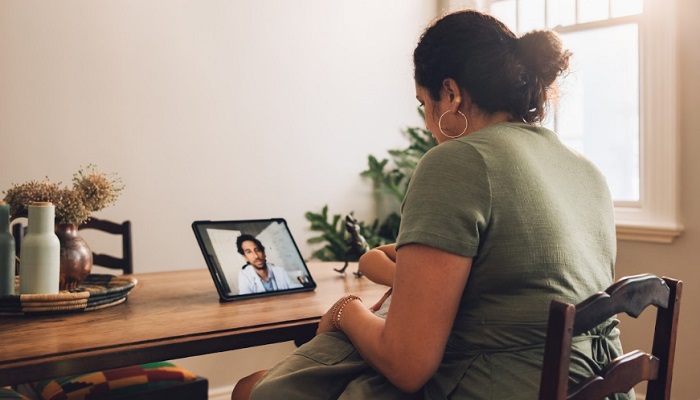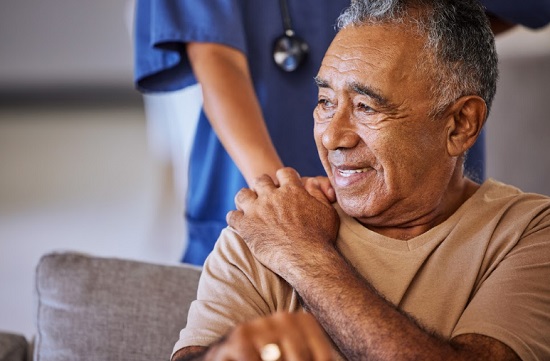As the rapid pace of technology infiltrates the healthcare sector, many aspects of medical care that once required a trip to the doctor’s office are now feasible from the comfort of one’s home. Innovations in remote healthcare are transforming how patients engage with medical professionals, manage their health, and receive treatment.
Amid these advancements, pain management remotely has become an intriguing focal point. Similarly, when you look at these blood pressure monitors, they provide an easily accessible way to keep track of heart health and notify patients of potential concerns.
Benefits Of Remote Healthcare Monitoring
Remote healthcare monitoring offers numerous benefits to patients. Firstly, the convenience of monitoring and managing one’s health from home eliminates the need for frequent trips to clinics or hospitals, saving individuals time and money.
Additionally, many patients experience stress or anxiety in clinical settings, which can negatively impact their overall health. Through remote monitoring, patients can avoid these stressful settings and take control of their health in a more comfortable environment.
Lastly, home-based monitoring allows patients to track their health on their schedule, improving their overall quality of life and allowing them to take a more proactive role in their healthcare journey.
1. Monitoring Cardiovascular Health
Monitoring cardiovascular health has become increasingly important as heart disease remains a leading cause of death worldwide. Modern technology has provided us with devices such as wearable heart rate monitors and smartwatches that are capable of detecting irregular heart rhythms.
These innovative tools, along with these blood pressure monitors for example, enable individuals to stay well-informed about their cardiac health, allowing for timely interventions when necessary. By proactively monitoring their cardiovascular health, individuals can potentially prevent serious complications and even save lives.
2. Managing Diabetes From A Distance
Managing diabetes from a distance has become more efficient with the latest advancements in glucose monitoring technology. Diabetic patients understand the significance of regularly monitoring their blood glucose levels. Newer glucose meters provide real-time tracking of glucose levels and allow instant sharing of this information with healthcare providers.
This constant feedback loop between patients and healthcare providers enables timely adjustments in insulin dosages, resulting in better blood sugar control and reduced risks of complications associated with diabetes. With the ability to manage diabetes remotely, individuals can maintain better control over their condition and receive prompt interventions when necessary, ultimately improving their overall health and quality of life.
3. Lung Function And Respiratory Health At Your Fingertips
At-home monitoring solutions offer significant benefits for patients with chronic respiratory conditions such as asthma and COPD. Portable spirometers, for example, enable individuals to assess their lung function conveniently. By regularly tracking changes in lung function, patients can identify any decline in respiratory health and make informed decisions about adjusting their medications or seeking medical attention as needed.
This proactive approach to monitoring lung function empowers individuals to control their respiratory conditions and optimize their treatment plans, ultimately leading to improved quality of life and better respiratory health management.
4. Remote Mental Health Check-Ins
Your mental well-being is just as critical as your physical health. Technology now supports online therapy sessions, apps that track mood patterns, and platforms that offer cognitive behavioral therapy exercises. Keeping tabs on your mental health is no longer confined to a therapist’s office.
5. The Digital Future Of Rehabilitation
Patients undergoing rehabilitation, whether after surgery or due to chronic conditions, can harness virtual reality’s (VR) power. VR platforms help you follow specific physiotherapy routines, ensuring that exercises are performed correctly and aiding faster recovery.
6. Enhancing Medication Adherence
Forgetting to take your medications? Smart pill dispensers notify you when to take your dose and alert caregivers if a dose is missed. Such devices can be instrumental for elderly patients or those with complex medication regimens.
Understanding Remote Health Challenges
It’s vital to recognize that remote healthcare is promising but not without challenges. Digital literacy, data privacy concerns, and ensuring consistent patient engagement need attention.
-
Ensuring Data Privacy And Security
One of the top concerns with remote monitoring is the shared data’s security. Manufacturers and healthcare providers must prioritize encrypting sensitive health information to prevent breaches.
-
Bridging The Digital Divide
While technology is more accessible than ever, a significant portion of the population is unfamiliar with using advanced gadgets. Ensuring that all patients, regardless of age or tech-savviness, can benefit from remote healthcare is essential.
-
Consistent Engagement Is Key
Merely having a remote health device doesn’t guarantee its effective use. It’s crucial to keep patients engaged, encouraging regular device use and accurate data input.
Looking Ahead: The Integration Of Remote And Traditional Healthcare
The blend of traditional and remote healthcare seems to be the most plausible future. While at-home monitoring provides convenience and real-time data, face-to-face interactions with healthcare providers remain irreplaceable for certain aspects of care. The key lies in striking a balance, ensuring patients get the best of both worlds. The future is indeed promising, with the potential to make healthcare more personalized, accessible, and effective than ever before.



















